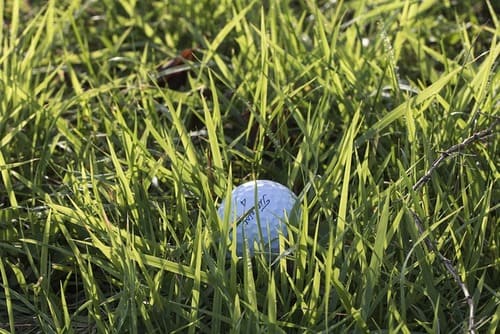In the game of golf, players are always worried about how to get through the deep rough. Some of these problems include a flyer lie, which happens when the golf ball gets partly buried in the grass. When players deal with a flyer lie, they have to expect the ball to go farther than they thought it would, like taking flight. This sudden turn can catch players off guard if they are not ready. Managing a flyer lie well depends on being able to spot this type of lie and understand what might happen as a result.
How To Read A Flyer Lie In Golf
It is important to remember that a flyer lie doesn’t happen very often on light rough ground. It’s likely that you have a flyer lie if your golf ball is stuck in full or heavy rough and stays on the ground. On the other hand, a “fluffy lie” means that the ball is in heavy rough. But the ball is above the ground because of the grass. This requires a different technique. A PGA official named Zack Allen says that you are more likely to find a flyer lie when the grass around the target seems to grow in that direction.
Mechanics Of A Flyer
When dealing with a flyer lie, the extensive grass surrounding the ball always causes contact with the grass to come before contact with the ball itself. The backspin that the club face creates is lessened by this contact, which makes the ball go farther than expected. Also, because there is less spin, the ball can roll farther than it normally would. This lack of spin might be helpful in some situations. For instance, when you have to hit a long shot from a great distance. But can be negative for closer range shots around the green. Which usually means you miss the target because you weren’t ready for the extra yardage.

Getting Through the Challenge
Even experienced golfers with a lot of experience can be caught off guard by how unpredictable flyer lies can be. Greg Norman, who played in the 1980 Australian Open, said that a flyer lie can catch anyone off guard. Norman was 260 yards from the pin and had deep rough all around him. He chose a 5-iron because he planned to lay up in front of the green. But his well-executed swing sent the ball flying out of the rough and far off course from where he wanted it to go. In the end, the ball traveled more than 300 yards.
Most of the time, players are told to use a club with less loft when they have flyer lies. For instance, Tom Watson, a former PGA Tour star, says that you should use a wedge instead of a 9-iron. Watson also says that right-handed players should aim a little to the left of the goal, open the club face a little, and move closer to the ball. Still, it’s important to note that figuring out the exact distance the ball will move from a flyer lie is still a bit of a guess. Greg Norman says that you should move the ball about an inch further back in your stance. This change makes the angle of attack steeper. Which, in turn, keeps grass from getting in the way of the club head hitting the ball.
Final Thoughts
To sum up, a flyer lie in golf is a unique problem that needs to be understood, recognized, and dealt with in a variety of ways. Golfers can better handle the uncertain nature of the game and avoid unplanned flights past their intended targets if they learn how to handle this situation.






